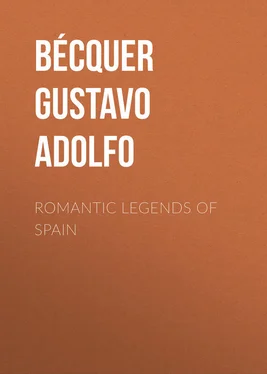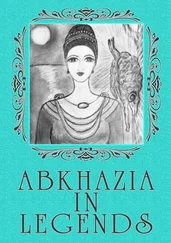The white villages that encircle the town, sprinkled here and there over an undulating plain of verdure, appear from a distance like a flock of doves which have lowered their flight to quench their thirst in the waters of the river.
A naked crag, at whose foot the river makes a bend and on whose summit may still be seen ancient architectural remains, marks the old boundary line between the earldom of Urgel and the most important of its fiefs.
At the right of the winding path which leads to this point, going up the river and following its curves and luxuriant banks, one comes upon a cross.
Конец ознакомительного фрагмента.
Текст предоставлен ООО «ЛитРес».
Прочитайте эту книгу целиком, купив полную легальную версию на ЛитРес.
Безопасно оплатить книгу можно банковской картой Visa, MasterCard, Maestro, со счета мобильного телефона, с платежного терминала, в салоне МТС или Связной, через PayPal, WebMoney, Яндекс.Деньги, QIWI Кошелек, бонусными картами или другим удобным Вам способом.
To the posthumous edition of Becquer’s Works , Señor Correa prefixed an account of the poet’s life. This, brief and often indefinite as it is, remains the authentic biography. It has been partially reproduced in English by Mrs. Humphry Ward, who published in Macmillan’s Magazine , February, 1883, pp. 305-320, a valuable article entitled: A Spanish Romanticist: Gustavo Becquer . Professor Olmsted of Cornell, in his recent class-room edition of selected Legends, Tales and Poems by Becquer (Ginn and Company, Boston, 1907) contributes additional facts gathered from Spanish periodical articles – of which he gives a bibliography – and in conversation with Spaniards who had known the poet.
Of the seventy-six poems that make up the Rimas , thirty-two are given in literal English rendering by Lucy White Jennison (“Owen Innsley”) as the third section of her Love Songs and Other Poems (The Grafton Press, New York, 1883), and a few are similarly rendered by Mrs. Humphry Ward in the article already mentioned. A complete translation in English verse, by Jules Renard of Seattle, has just come (1908) from The Gorham Press, Richard G. Badger, Boston.
Not, to my knowledge, translated into English.
Except for a few magazine waifs and strays, usually in abridged form, and for seven out of the twelve stories in W. W. Gibbings’ Terrible Tales , where the translation, according to Professor Olmsted, is “often inaccurate,” these legends have not before been translated into English. The twenty-one here given include everything even remotely in the nature of a tale contained in the three volumes, with the exception of the two East Indian legends already mentioned, and the two witchcraft tales in From My Cell . Good as these witch stories are, it seemed a pity to take them out of their context. What might be considered further omission is noted later. Of the translations in this volume, several have appeared in Short Stories , two in The Churchman , and one in the Boston Evening Transcript .
And therefore has not been included in this volume.
Not included in this volume because it should not be taken from its context.












